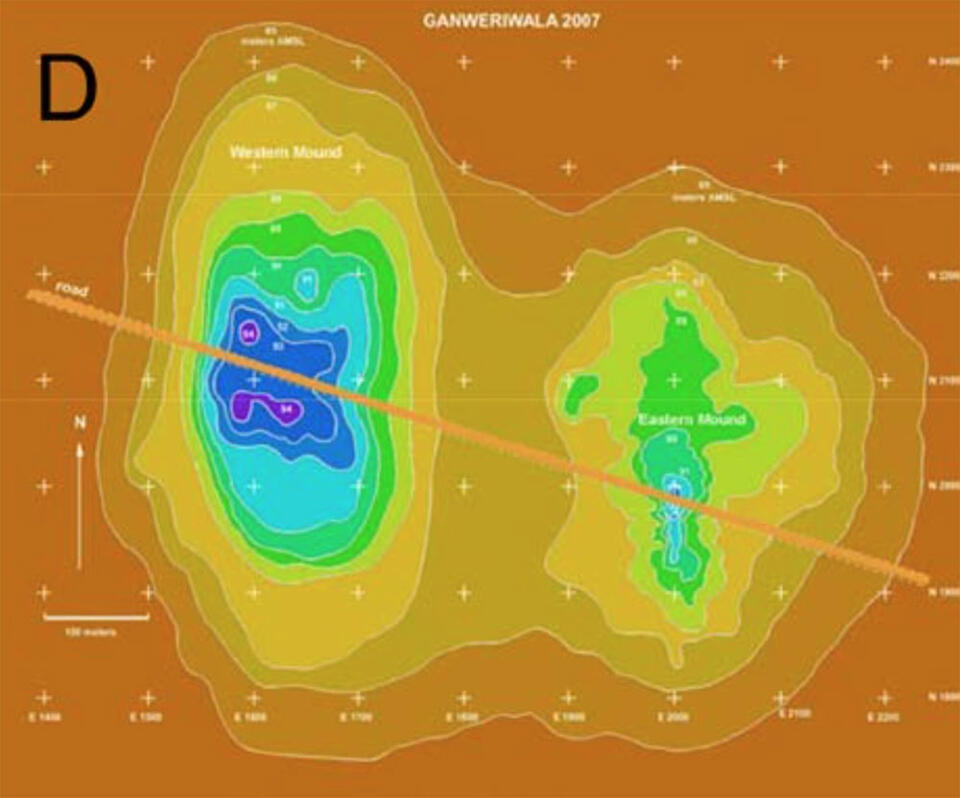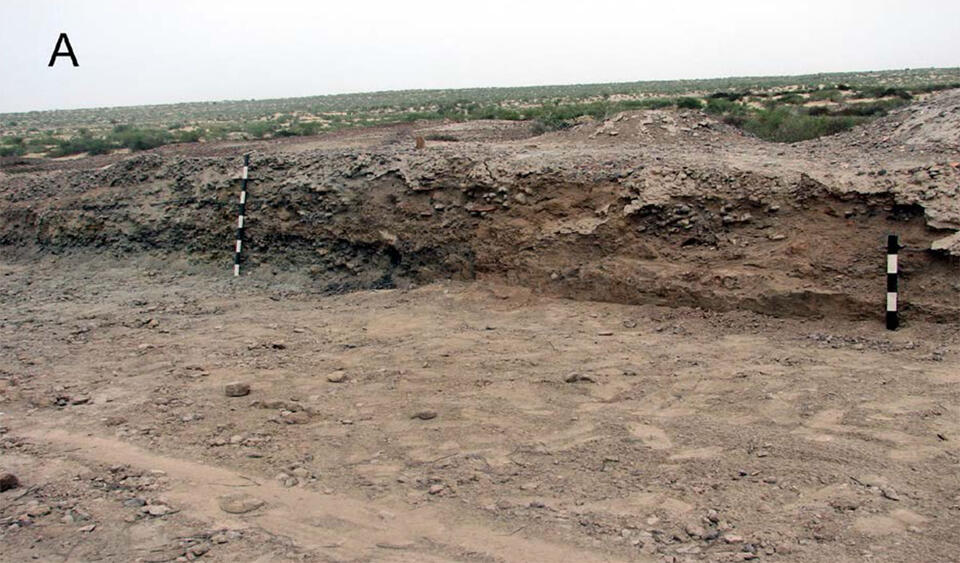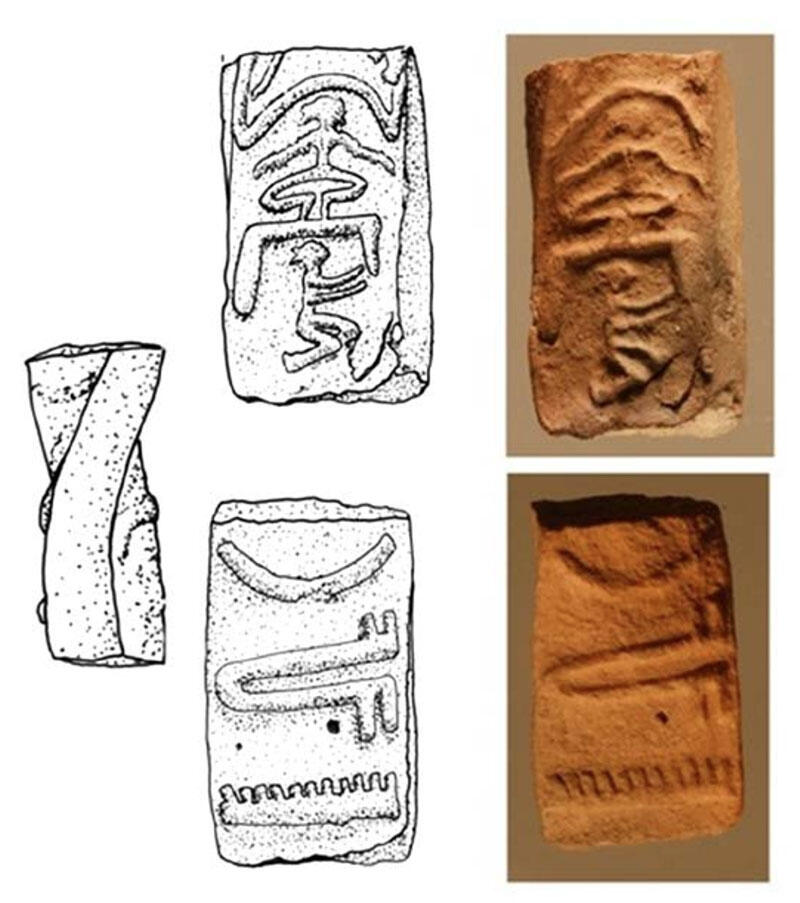May 4th, 2019
The least excavated of the five large known ancient Indus cities – Mohenjo-daro and Dholavira, Harappa and Rakigarhi – is Ganweriwala, discovered in the late 1980s by Rafique Mughal. Deep in the desert, far from any towns and close to the Indian border, it has hardly ever been written about until Farzand Masih's article Ganweriwala – A new Perspective published in Walking with the Unicorn (2018). "In recent years," writes Masih, "a four-meter wide road was constructed though the middle of Ganweriwala to facilitate the movement of hunting parties from the UAE. Although this is highly unfortunate, it did provide ready-made sections across the upper portions of the mounds" (Unicorn, p. 381, Figure 2, the road is also shown as the line through Mounds A and B in Figure 1).
Some remarkable finds have been coughed up from Ganweriwala, but first: how big is it really? Mughal estimated over 80 hectares, which would make it one of the largest Indus sites. A survey ten tears later had it at about half that size, though Masih writes: "it is possible that some areas of the site are now covered by sand dunes and, perhaps, will be located during future explorations" (p. 381). In any case, Ganweriwala was much larger than the dozens of other sites measured along the old Hakra riverbed by Mughal (see Ancient Cholistan, 1997). Perhaps the most astounding discovery was four unicorn figurines (Fig. 3), the most from any Indus site (they are only also found at Harappa, Mohenjo-daro and Chanhu-daro). Then there is a clay tablet with a seated yogi-type figure (Fig. 4), as well as a nearly pure copper seal with boss not found elsewhere.
Ganweriwala also lies along the old Hakra riverbed that once flowed through here (the Saraswati? even if it flowed perennially as recent work seems to show till 1900 BCE). It is also roughly equidistant between Harappa, to the north on the Ravi River, and Mohenjo-daro, to the south on the Indus River, which might have made it a regional capital well downstream of Rakigarhi. Of course we will not know until it is properly excavated and some real trenches are dug deeply into the two known mounds, and the surrounding region is better explored. When that might be, no one know, the site has been untouched for thousands of years – until a sheikh got his road, and Indus archaeologists were tossed another tantalizing puzzle (we may lament the road construction, but the truth is that rapid construction throughout the subcontinent is unearthing many new sites which, sadly, are momentarily visible and then paved over and lost to scholarship for who knows how long).
The article is part of Walking with the Unicorn (2018).
Images:
1. Contour map of Ganweriwala
2. Road cut on Mound A
3. Images and line drawings of four unicorn figurines (photograph and drawing by Farzand Masih)
4. Clay tablet with yogi and three graphemes of the Indus script (photograph and drawing by Farzand Masih)








